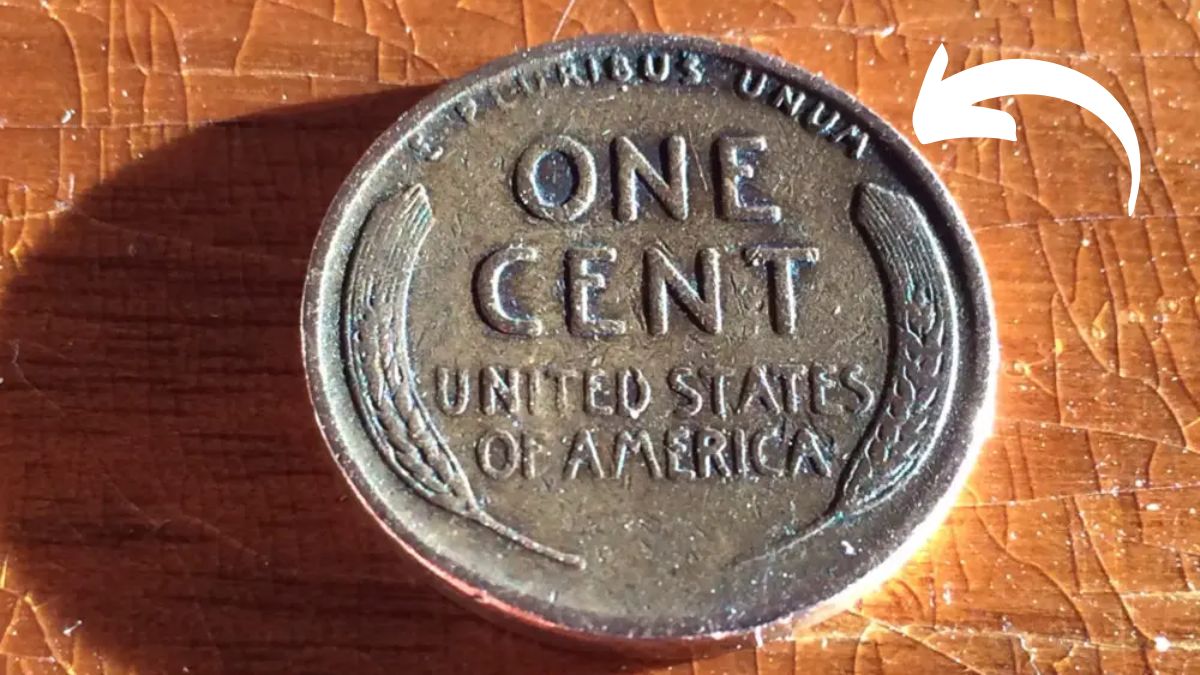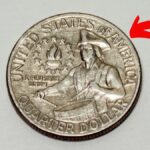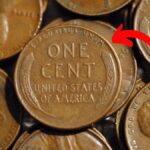The world of coin collecting is full of surprises, and among the most fascinating stories is that of the Lincoln Wheat Penny, a coin that has captured the imagination of collectors and history enthusiasts alike. With rumors of its valuation reaching a staggering $4 billion, this humble penny continues to intrigue and excite. But what makes the Lincoln Wheat Penny so special, and how is it still in circulation today? Let’s explore its history, rarity, and the reasons behind its astronomical value.
The Birth of the Lincoln Wheat Penny
The Lincoln Wheat Penny was introduced in 1909 to commemorate the centennial of Abraham Lincoln’s birth. Designed by Victor David Brenner, it was the first U.S. coin to feature a president’s portrait, marking a significant departure from previous designs that typically featured allegorical figures like Lady Liberty.
The coin’s obverse showcases a profile of Lincoln, while the reverse features two wheat stalks framing the words “ONE CENT,” along with the phrases “UNITED STATES OF AMERICA” and “E PLURIBUS UNUM.” This simple yet iconic design remained in production until 1958, when the reverse was replaced by the Lincoln Memorial design.
Why Is It Still in Circulation?
Despite its age, the Lincoln Wheat Penny can occasionally be found in pocket change. This is largely due to the massive quantities produced during its 49-year run. Over 26 billion Wheat Pennies were minted, making it one of the most widely circulated coins in U.S. history. While most of these coins are only worth their face value, a few rare specimens have become the stuff of legend.
The $4 Billion Valuation: Fact or Fiction?
The idea of a single Lincoln Wheat Penny being worth $4 billion might sound unbelievable, but it stems from the rarity and historical significance of certain specific variants. Here are some of the most valuable Lincoln Wheat Pennies and why they command such high prices:
1. The 1943 Copper Penny
During World War II, the U.S. Mint shifted to producing pennies from steel coated with zinc to conserve copper for the war effort. However, a small number of 1943 pennies were mistakenly struck on copper planchets left over from the previous year.
These 1943 Copper Pennies are incredibly rare, with only about 20 known examples. In 2019, one of these pennies sold at auction for $1.7 million, highlighting their immense value. If a perfect, uncirculated example were discovered, experts speculate it could fetch a price far exceeding current records.
2. The 1909-S VDB Penny
The 1909-S VDB Penny is another prized specimen. When the Lincoln Wheat Penny was first introduced, the designer’s initials “VDB” were prominently displayed on the reverse. Public criticism of this placement led to their removal shortly after production began. As a result, the 1909-S VDB Penny—minted in San Francisco with only 484,000 coins produced—became a rarity.
In pristine condition, this penny can command prices exceeding $100,000. Its historical significance as one of the first Lincoln Pennies adds to its allure.
3. Error Coins and Variants
Beyond these well-known examples, numerous error coins and variants contribute to the Lincoln Wheat Penny’s mystique. Double-die obverse pennies, off-center strikes, and other minting anomalies can significantly increase a coin’s value. Some collectors are willing to pay thousands or even millions for these unique errors, depending on their rarity and condition.
The Historical and Cultural Significance
The Lincoln Wheat Penny is more than just a collectible; it’s a piece of American history. It represents a pivotal moment when the U.S. Mint embraced modern design and honored a beloved president. For many, the penny is a tangible connection to the past, evoking memories of simpler times and a sense of national pride.
During its production, the Wheat Penny witnessed significant events, including two world wars, the Great Depression, and the dawn of the Civil Rights Movement. Each coin tells a story, and collectors cherish them not only for their monetary value but also for their historical context.
How to Identify Valuable Lincoln Wheat Pennies
If you’re lucky enough to stumble upon a Lincoln Wheat Penny, here are some tips to determine its value:
1. Check the Date and Mint Mark
Certain years and mint marks are more valuable than others. For example, pennies minted in San Francisco (indicated by an “S” mint mark) or Denver (“D” mint mark) are often rarer than those from Philadelphia (no mint mark).
2. Look for Errors
Examine the coin closely for any unusual features, such as doubled lettering, off-center strikes, or other minting errors. These anomalies can significantly increase a coin’s worth.
3. Assess the Condition
A coin’s condition, or grade, plays a crucial role in determining its value. Coins in mint or uncirculated condition are far more valuable than those that show signs of wear.
4. Seek Professional Certification
To authenticate and grade your coin, consider submitting it to a professional grading service like the Professional Coin Grading Service (PCGS) or the Numismatic Guaranty Corporation (NGC). Certified coins often fetch higher prices at auction.
Tips for Aspiring Collectors
If you’re interested in starting a collection of Lincoln Wheat Pennies, here are some practical tips:
- Start Small: Begin with common Wheat Pennies to familiarize yourself with their design and features. These are often available for a few cents each.
- Educate Yourself: Learn about key dates, mint marks, and errors to identify valuable coins.
- Invest in Tools: Purchase a magnifying glass, coin albums, and protective cases to store and examine your collection.
- Buy from Reputable Sources: Always buy coins from trusted dealers or auction houses to avoid counterfeits.
- Join a Community: Connect with other collectors through forums, clubs, or social media to share knowledge and experiences.
The Thrill of the Hunt
Part of the Lincoln Wheat Penny’s enduring appeal lies in the thrill of the hunt. Finding a rare or valuable coin in circulation is a dream for many collectors, and the possibility keeps the hobby exciting. Even if you don’t strike gold, the journey of discovery is often its own reward.
Conclusion: A Penny Worth More Than Its Weight in Gold
The Lincoln Wheat Penny is a testament to the rich history and artistry of American coinage. While the idea of a $4 billion penny may seem far-fetched, it underscores the value that collectors place on rarity, condition, and historical significance. Whether you’re a seasoned numismatist or a curious beginner, the Wheat Penny offers endless opportunities for exploration and appreciation.
So, the next time you receive a penny in your change, take a closer look. You might just be holding a piece of history—and perhaps even a small fortune—in the palm of your hand.
Disclaimer: The values and historical details mentioned in this article are based on available records and expert insights. Always consult a professional numismatist for accurate valuations and authentication of rare coins.







